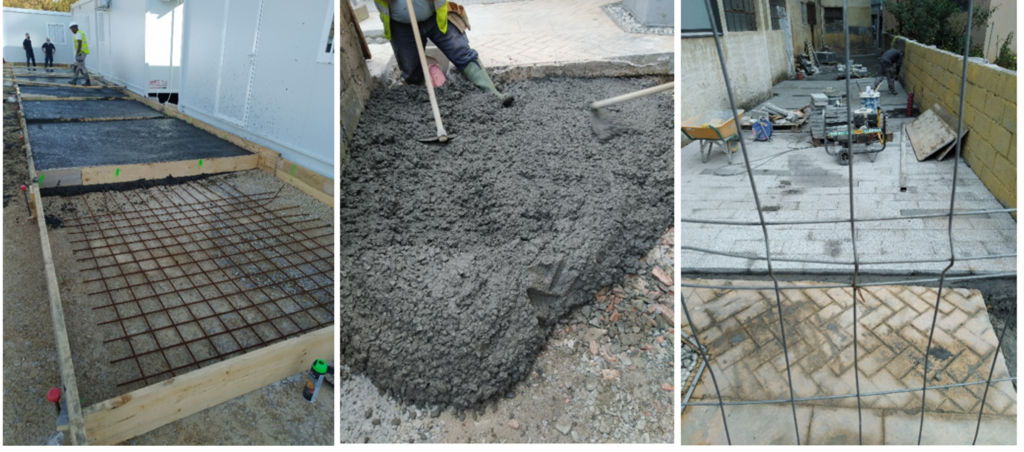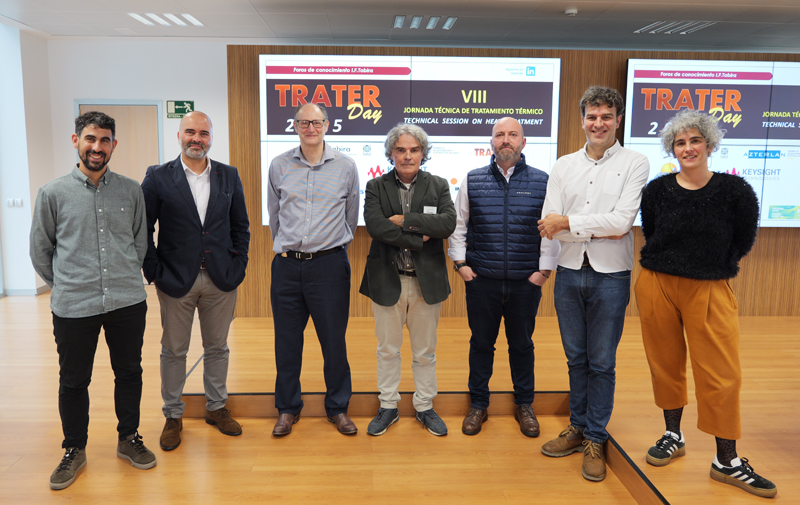The ERAIMAT project consortium formed by the cast iron foundries DRAXTON ATXONDO, FAGOR EDERLAN and FUMBARRI, along with the company BIKAIN (cement-based products manufacturer) and AZTERLAN Metallurgy Research Centre, has carried out the pilot commissioning of 3 construction materials designed from foundry industrial waste sand.
Foundry sand and fines along with certain metallic slags, dusts and slugs are types of waste generated in large amounts, whose current management model continues to be focused mostly on landfill deposition.
In this context and with the aim of giving a new use to waste foundry sand, the ERAIMAT project consortium is working on the use and validation in mortar and concrete materials. As explained by Lucía Unamunzaga, head of the Sustainability and Environment research line of AZTERLAN, “in the closer past the greatest efforts have been focused on designing and defining optimum dosages of this industrial waste at laboratory scale. Now, in this last phase of the project, we have been able to put into practice this previous design work to demonstrate and validate its feasibility on specific real construction applications”.
Thus, the work team has developed 3 different construction materials, which have been used in two different construction works in the Basque Country.
The first development has been the manufacturing of mass concrete from steel and foundry waste materials, partially applied in the construction of the new train station of Zarautz. For the development of this pilot application, 6 concrete slabs have been manufactured and implemented with and area of 81 m2. These slabs have been manufactured from the mass concrete pattern HM20 and two HM20 concretes that contain 15% of foundry sand from two different origins. “These products with recycled foundry sand designed at laboratory-scale have compressive strengths close to 35 N/mm2, which broadly satisfies the specifications of this type of concrete”.
The second application has been carried out in a street paving work at the municipality of Iurreta. In this particular case the demonstrator has consisted on the application of concrete in limestone mass with 15% of foundry sand on a 135 m2 screed. “We have verified in the lab that this product has as well better resistance properties than the ones specified for this type of concrete, showing compressive strengths of 37 N/mm2″. The application of the pavement has been carried out with a class M5 mortar that contains 20% of foundry sand manufactured by the company BIKAIN. “This mortar has exceeded 15 N/mm2 of compressive strength in the laboratory. A value three times higher than specified for this type of mortar”.
As explained by the AZTERLAN researcher “these real construction demonstrators constitute an important milestone of great value for the research work carried out within the ERAIMAT project”.
However, the project does not end with this application. “After a stipulated period, we will carry out relevant quality tests on the products that have been recently applied. As a result of the study, we intend to conclude with the definition of the final specifications and application conditions for these foundry waste in this type of construction materials”. In the particular case of the application in the train station of Zarautz, Euskal Trenbide Sarea has agreed to “study the quality and behavior of the concrete over at least, the next two years”.
.
Fom left to right the materials applied in the construction works: 1) HM20 steel+foundry sand control slabs 2) Iurreta: application of limestone+foundry sand in HM20 concrete 3) Application in M5 masonry mortar for paving
Revalorisation of sand and industrial waste: a strategic bet for the Basque Country
The 2030 Waste Plan of the Basque Country includes among its objectives some that directly affect the Basque metal industry, such as reducing the rate of total waste generation by 30%, reusing 85% of non-hazardous waste by converting it into secondary materials and reducing landfill disposal to less than 15%. “The work we carry out at AZTERLAN in close collaboration with companies from the industrial sector is directly oriented to achieve these ambitious goals through the development of strategies for the prevention, classification and reuse of waste”.
However, “as important as developing new technologies and ways to reuse is to find application routes and agents that will incorporate the materials developed from this waste”. In this specific case “we could not have carried out this experience without the open collaboration of Euskal Trenbide Sarea and the City Council of Iurreta, as well as the construction company Lasuen in charge of this last work”.
The ERAIMAT project is funded by the Basque Government’s HAZITEK programme.


